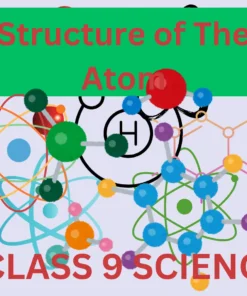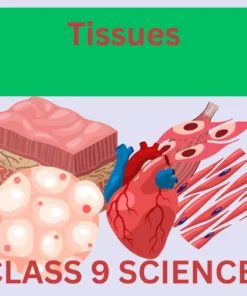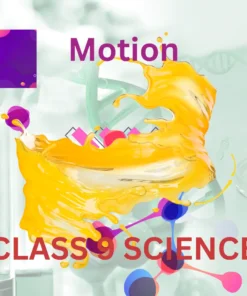Force And Laws Of Motion CLASS 9 SCIENCE
$40.00 Original price was: $40.00.$25.00Current price is: $25.00.
Introduction to Force
In the realm of physics, force is defined as a vector quantity that can cause an object with mass to change its velocity, which includes changing its speed or direction. Force is an essential concept as it plays a vital role in understanding motion and mechanics. It manifests through various interactions and can be categorized into two primary types: contact forces and non-contact forces.
Introduction to Force
In the realm of physics, force is defined as a vector quantity that can cause an object with mass to change its velocity, which includes changing its speed or direction. Force is an essential concept as it plays a vital role in understanding motion and mechanics. It manifests through various interactions and can be categorized into two primary types: contact forces and non-contact forces.
Contact forces occur when two objects physically touch each other. Examples of contact forces include frictional force, tension force, and normal force. For instance, when a book is pushed across a table, friction acts as the opposing contact force between the book and the surface of the table. Conversely, non-contact forces, also referred to as action-at-a-distance forces, exist without physical contact. These forces include gravitational force, electromagnetic force, and nuclear force. A clear example of a non-contact force is the gravitational pull that the Earth exerts on an object, which keeps it grounded.
Understanding the balance between forces is crucial for analyzing motion. Balanced forces occur when two forces acting on an object are equal in size but opposite in direction, resulting in no change in motion. For instance, if two people push a stationary car with equal force from opposite sides, the car remains at rest. In contrast, unbalanced forces lead to a change in an object’s state of motion. If one individual applies a stronger push than the other, the car will move in the direction of the stronger force.
The unit of force is measured in Newtons (N), named after the renowned physicist Sir Isaac Newton. This unit provides a standardized measure of force, allowing scientists and engineers to quantify the strength of various forces acting on objects. Understanding force, its types, and its effects is fundamental in the study of movement and dynamics in the physical world.
Newton’s Laws of Motion
Newton’s Laws of Motion are fundamental principles that form the core of classical mechanics. These three laws, formulated by Sir Isaac Newton in the 17th century, describe the relationship between the motion of an object and the forces acting upon it. Understanding these laws is crucial for students studying physics, particularly in Class 9 science, as they provide a framework for analyzing various physical phenomena.
The first law, often referred to as the Law of Inertia, states that an object at rest will remain at rest, and an object in motion will continue in a straight line unless acted upon by an external force. This principle emphasizes the concept of inertia: the resistance of any physical object to any change in its state of motion. A practical example of this law can be seen when a passenger in a car lurches forward during sudden braking. The inertia of the passenger’s body causes them to continue moving forward, showcasing how external forces are necessary to change an object’s motion.
The second law, known as the Law of Acceleration, articulates that the acceleration of an object is directly proportional to the net force acting on it and inversely proportional to its mass. This relationship is often expressed by the equation F = ma, where F represents force, m is mass, and a denotes acceleration. A real-world illustration of this is when a heavier object, like a full shopping cart, requires significantly more force to accelerate compared to a lighter one. This law emphasizes how mass influences the effect of applied force.
The third law, the Action and Reaction Law, asserts that for every action, there is an equal and opposite reaction. This means that if one object exerts a force on another, the second object exerts a force of equal magnitude but in the opposite direction on the first object. A common example includes the action of a swimmer pushing water backward, leading to the reaction of moving forward. Together, these laws not only explain various everyday phenomena but also establish the foundational concepts necessary for further studies in physics and engineering.
Be the first to review “Force And Laws Of Motion CLASS 9 SCIENCE” Cancel reply
Related products
Uncategorized
CLASS 9
CLASS 9
CLASS 9












Reviews
There are no reviews yet.